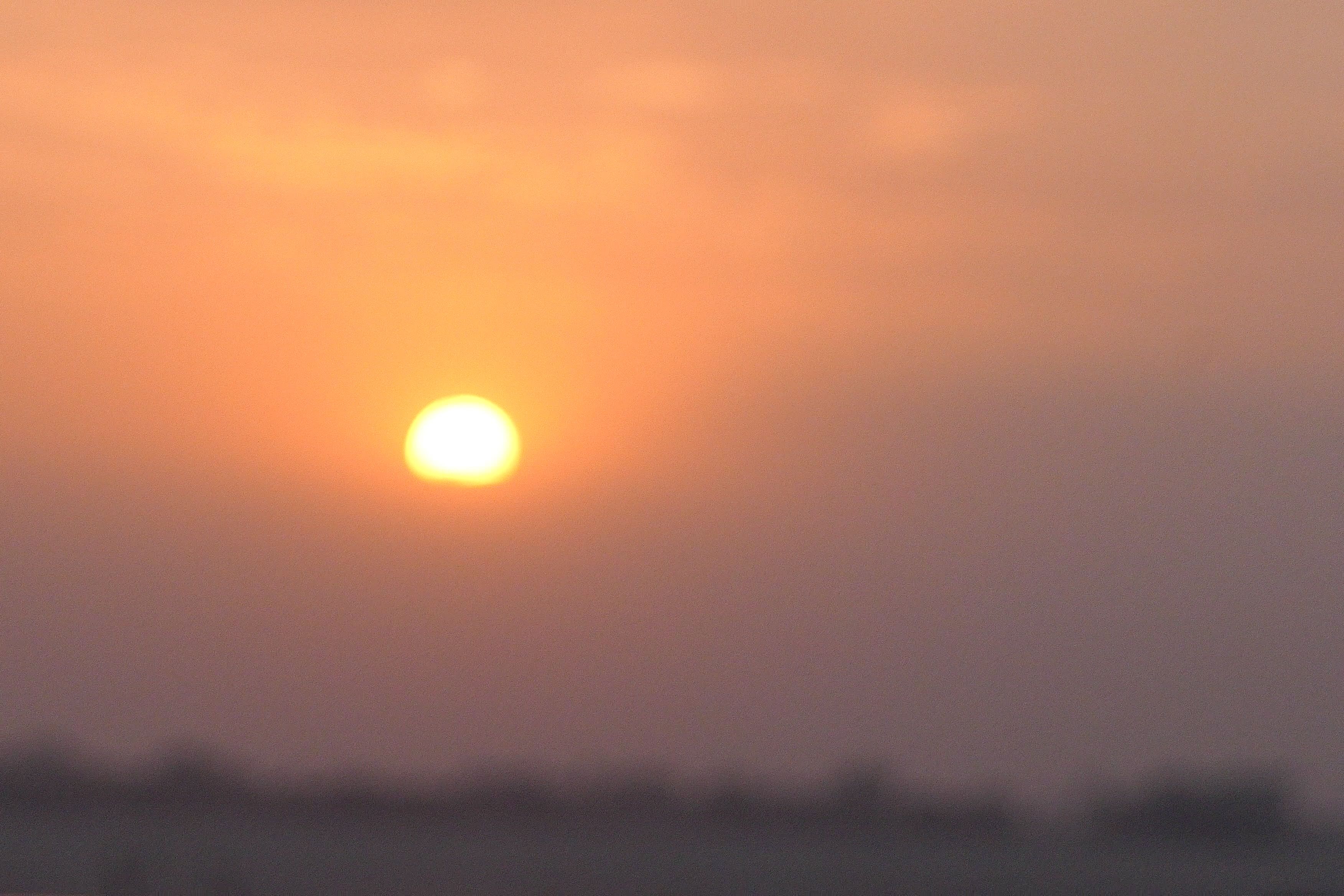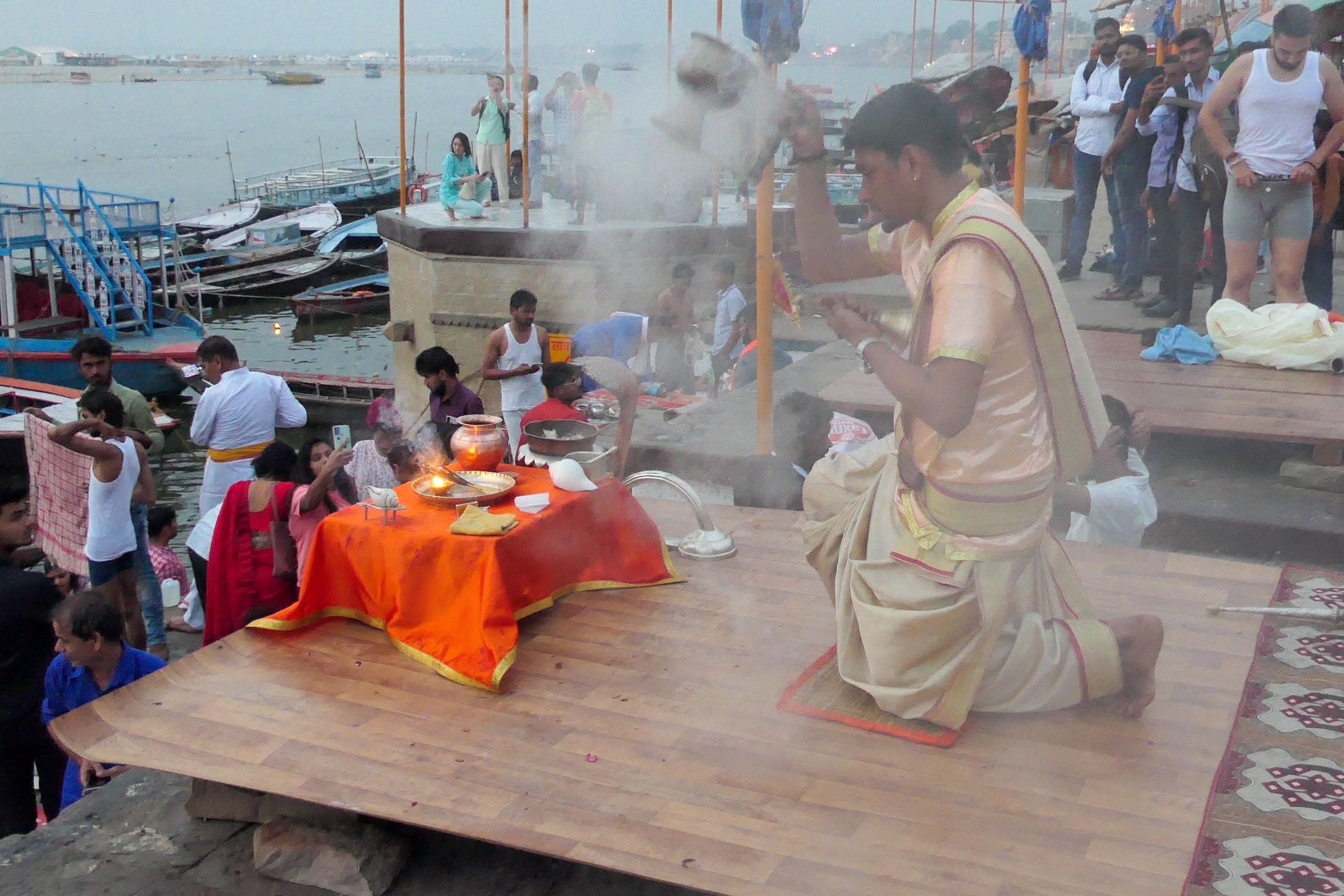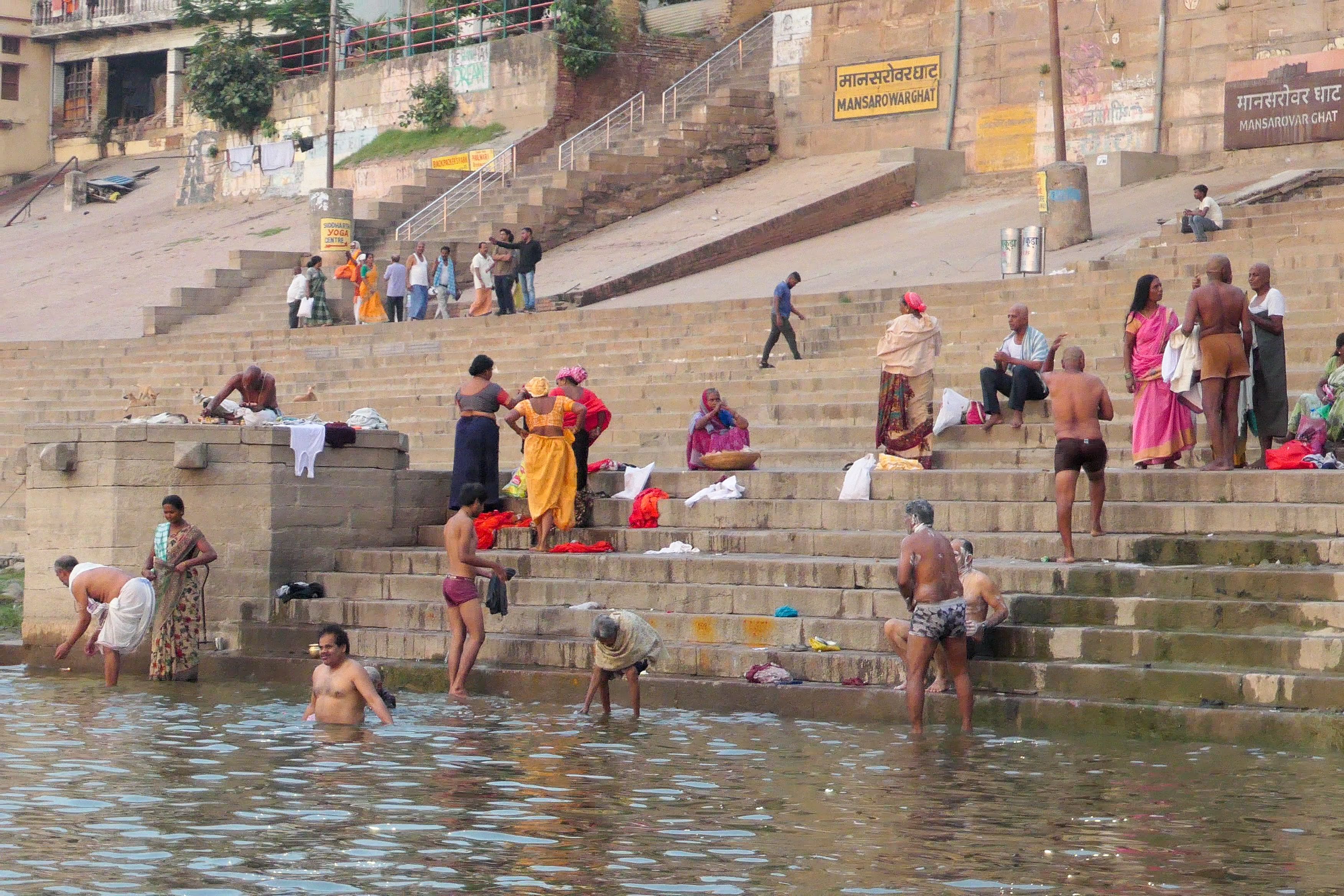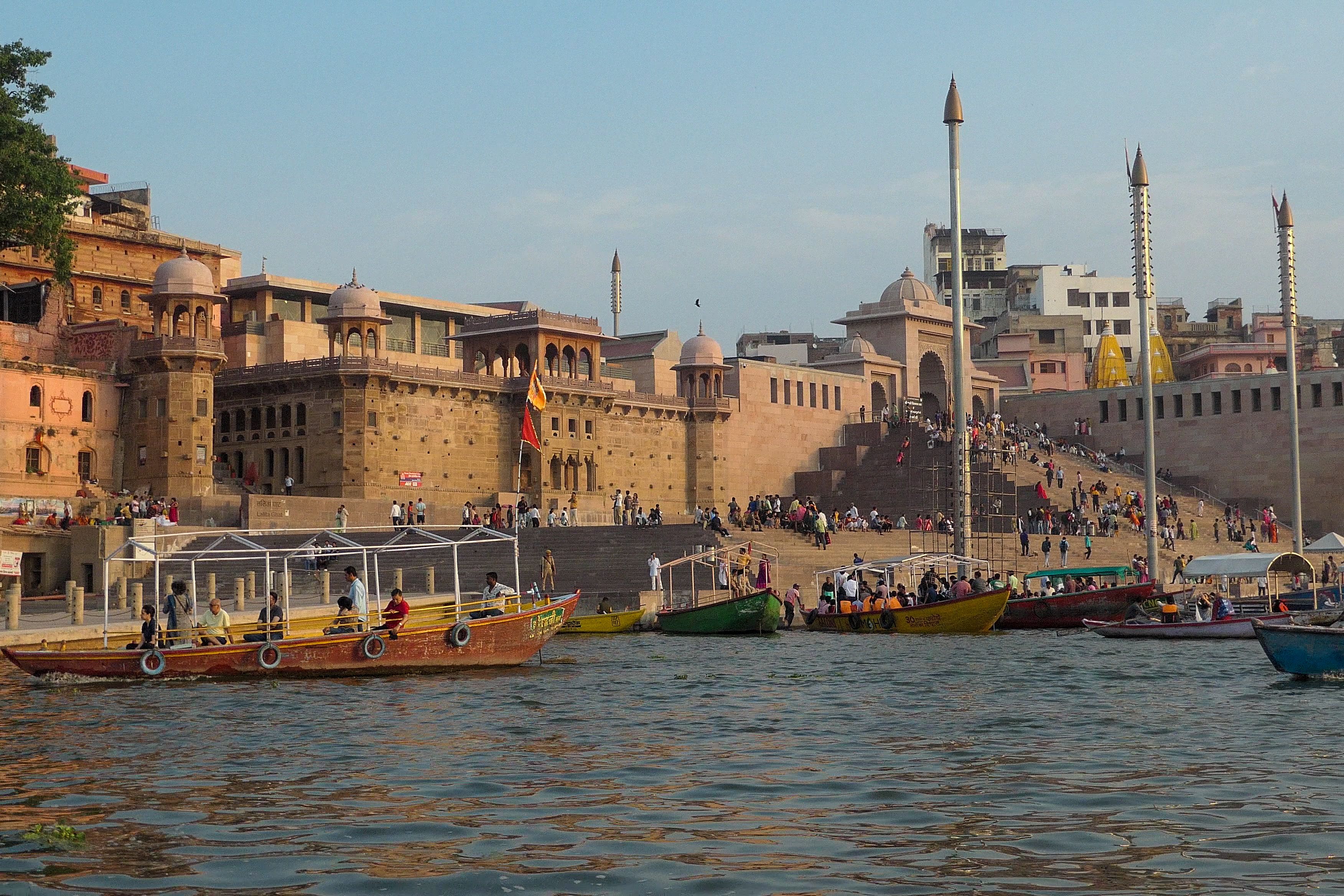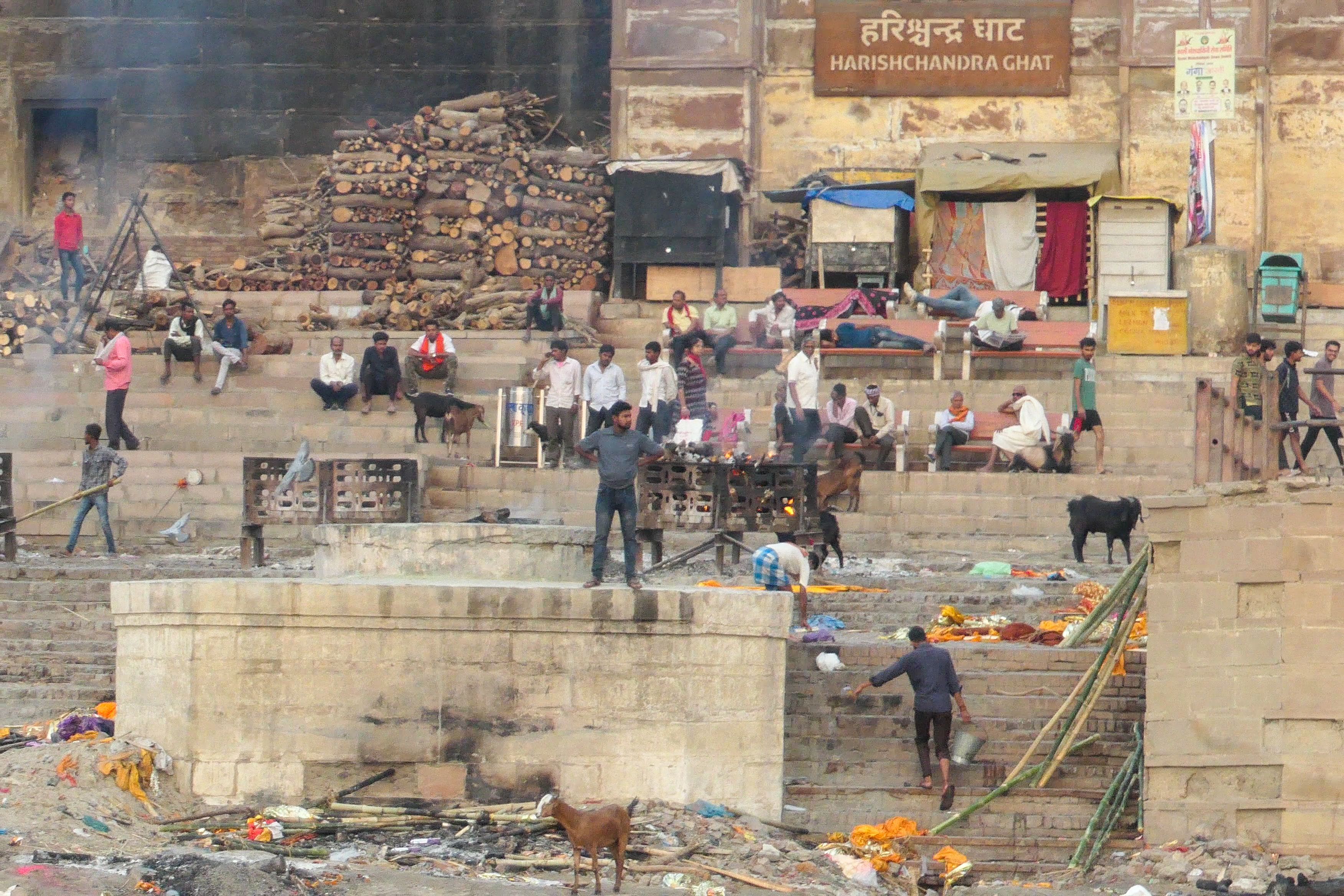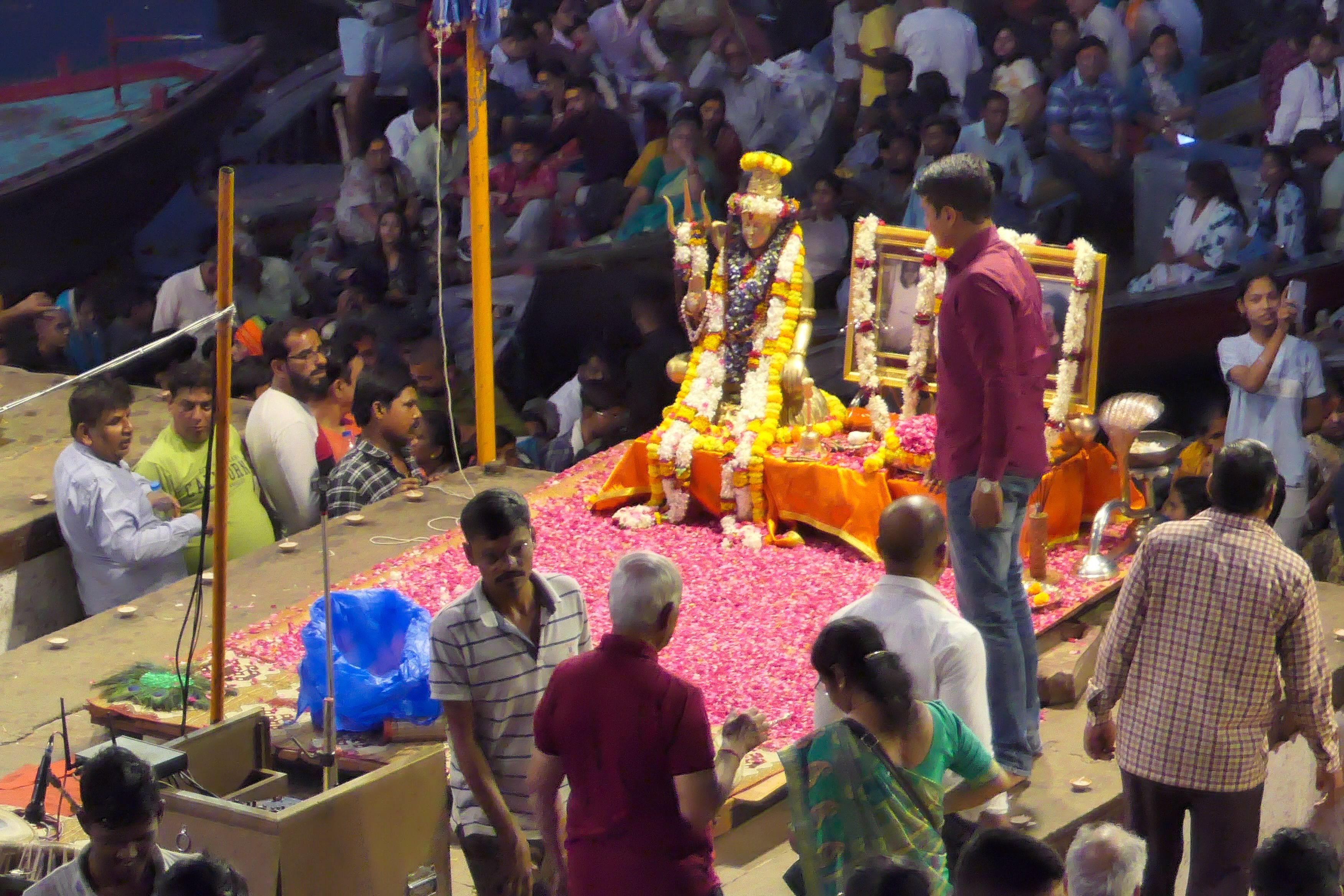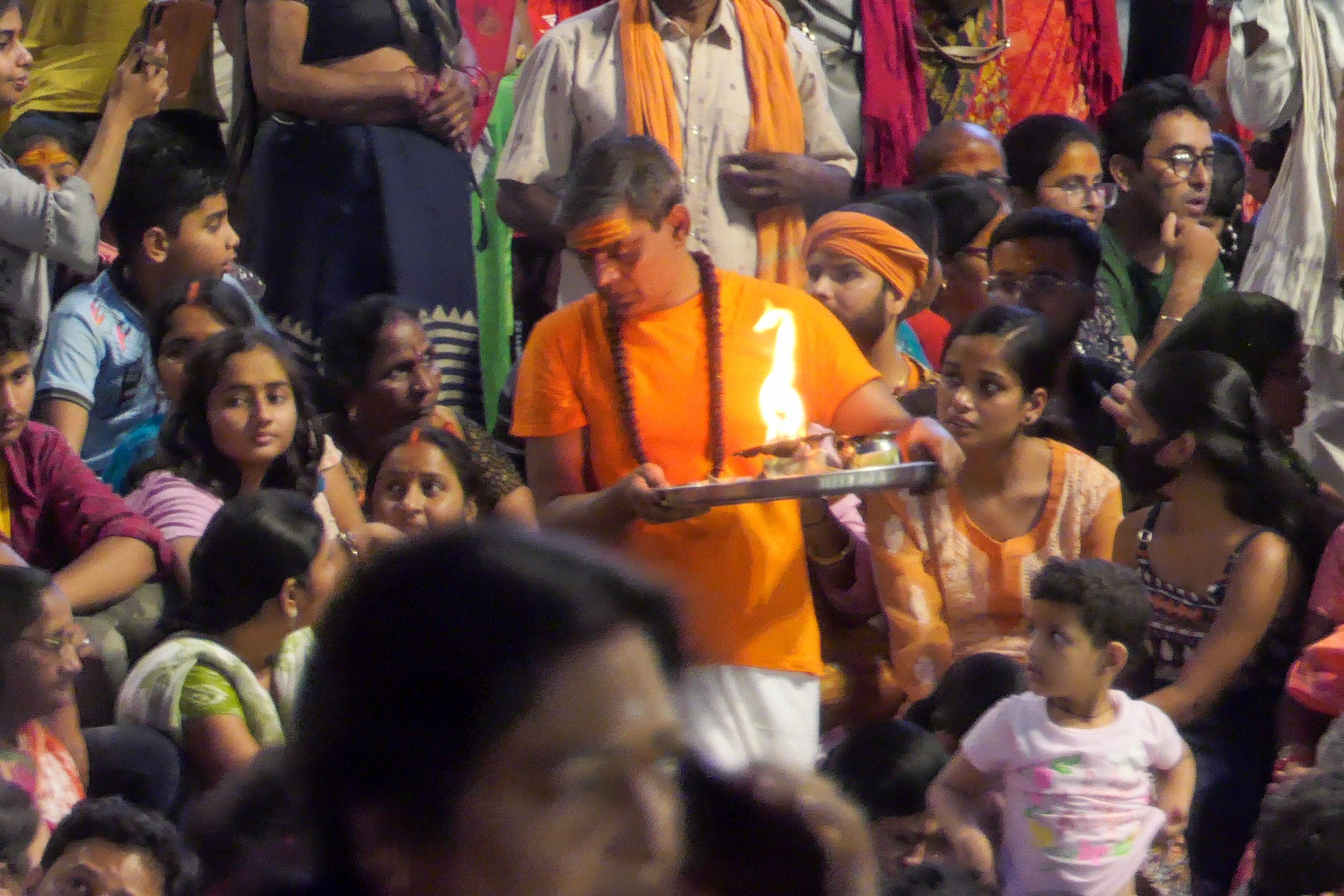Ganga Aarti
Monday, 10 April 2023
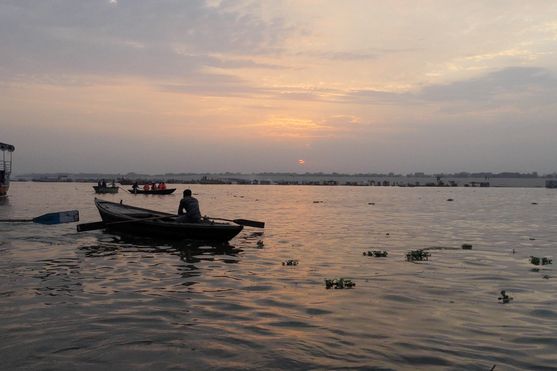
Sunday, 9 April, Morning
Rajendra has told us that we’re going to the river twice today. Once in the morning, once in the evening. In the morning, we will be rowed down the river; in the evening, we will watch a Hindu ceremony.
We get up at 5 AM. There’s already traffic on the road, but not much. (During the day, the traffic in Varanasi is worse than any traffic we’ve ever seen, even in New Delhi.) The only people walking along the street at the time seem to be Muslim men, on their way to morning prayer, I suppose.
Calvin, Rajendra and I leave the car with Pappu and walk a couple of kilometres to the river. We are at a place called Dashashwamedh Ghat. Wide concrete stairs lead from the road all the way down to the water. By the time we get there, there is a bit of a crowd, nothing big. But some ceremony is already underway. A handsome young man, a Brahmin priest, is standing under a metal frame; he has an oil lamp which looks like a snake looming over a fire, and he is waving it around. Some bells dangle from the frame, and a man is pulling on a rope to ring them. They ring at a frequency that sets something vibrating uncomfortably below my right ear, and I have to stick my pinky finger in my ear to stop it. Down at the river, people are stripping off to bathe in the water.
After watching the young man for a while, we follow Rajendra down the steps to the river and walk across a few small wooden boats before reaching a boat with one occupant, who will be rowing us across the river. We get in. Rajendra gives us each a small basket containing some flowers and a small candle. During the ride we will light the candles, make a wish and set the baskets to float on the surface of the water. I can’t remember if I made a wish at all, but I do remember wondering about the content of Calvin’s wish.
Rajendra points out the other ghats along the bank of the river. A ghat is a site where a cremation takes place. Dashashwamedh Ghat, where we embarked, is the most important ghat, but there are other ghats all along the river.
We travel down the river and part of the way back. We disembark and ascend to the road above the river and walk among some new buildings — a temple complex, I think. But we stop for a second to look down towards Manikarnika Ghat, where some cremations are taking place. Calvin starts taking photographs, but a young man with an impressive moustache tells him to stop. “Look with your eyes. Camera doesn’t always work. Eyes work all the time.”
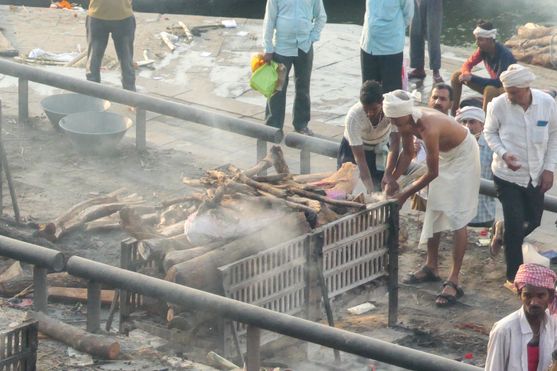
After a brief stop to buy essential oils for some reason, we rejoin the car and arrive back at the hotel before breakfast.
Evening
We’re picked up from the hotel at 5 PM. As I said, I know that we’re seeing a Hindu religious ceremony, but for some reason I haven’t asked Rajendra for any more information and I have no idea what to expect.
The streets are packed, and we have to walk through a massive crowd for a few kilometres, trying not to lose sight of one another. It’s a diverse crowd: young people, families, old people. Women tend to be wearing traditional clothes, but the men are wearing just about everything. Some people are riding motorcycles through the crowd; other people are making their way through the crowd on tuk-tuks and rickshaws.
Soon we reach Dashashwamedh Ghat. It’s packed with people, thousands and thousands of them. Rajendra leads us into a concrete building and up a flight of steps, where there is a rooftop balcony with rows of plastic seats. We sit down; there are more white people here than usual. On the river is an additional crowd of people, on boats like the one we travelled in this morning. This crowd is massive too — hundreds and hundreds of people
We wait for things to start. Behind us somewhere, the sun has nearly set.
I’m not sure how to tell you what happened next: there’s so much that I don’t understand and can’t confidently describe. There is a band: a pipe of some kind, sitars, a harmonium, drums and bells. There is a singer, but I can’t actually see him. A young man with a beautiful voice. The people recognise the songs, I think. Sometimes they raise their hands and respond, but I’m not sure what they say.
There is a row of mats, seven of them, under the frame where the young Brahmin was standing this morning with his lamp. They are covered with yellow petals, except for the middle one, which is soon covered with pink ones. There is something like a bolster or pillow at the head of each mat (a pulvinar?); on the middle one there is a statue of a god, robed and decorated, and a framed picture hung with garlands of flowers.
By the time the sun sets, there is a young man standing on each mat, like the young man this morning. Each man has a cone-shaped lampstand like a Christmas tree, with 108 individual burning lamps (I learn later). Each man also has a lamp like the man this morning, with the snake looming over a fire. The men lift the lamps in turn, moving in unison while the chanting continues.
On the building to our left, two women are fighting, and the young son of one of them is crying and fanning himself dramatically. This distracts us for a while. But basically everyone is attentive. They are watching the men, listening to the music and occastionally joining in with a response or some rhythmic clapping.
I think I become aware that things are winding up somehow. In any case, after about an hour, Rajendra hurries us off the balcony and down the stairs. Soon all three of us are travelling through a massively thick crowd on a rickshaw, whose driver is able somehow to drag more than a quarter of a tonne of large men through the heaving mass of people.
“Wow,” I say to Rajendra. “That was incredible. What was that?”
He laughs. “I’ll explain it to you in the car.”
The ceremony is called the Ganga Aarti, and it takes place every day after dusk. Tens of thousands of people attend. Varanasi has nearly 100,000 pilgrims a day, and so most of the people attending are tourists from other parts of India. When I asked Rajendra how often a local would attend the ceremony, he laughed again, and said that most locals would only attend if they had a friend or relative visiting Varanasi.
Rajendra said that the purpose of the ceremony was to ask the god to be present in some way — the god of the river or Shiva himself, I wasn’t sure. He said that a similar ceremony is performed behind closed doors in a temple to invite a god to embody itself somehow in the temple’s statues. Or something. I could easily have misunderstood. He said that the people participating raised their hands to receive grace or good vibrations — a blessing.
Anyway, I’ve attended my fair share of religious rituals over the decades, Christian and Buddhist mostly, but I have never seen anything like this. The unity and unanimity. The atmosphere, like a festival or a concert or a religious revival or a dance party. Fire and music and voice, echoing into the surrounding darkness.
